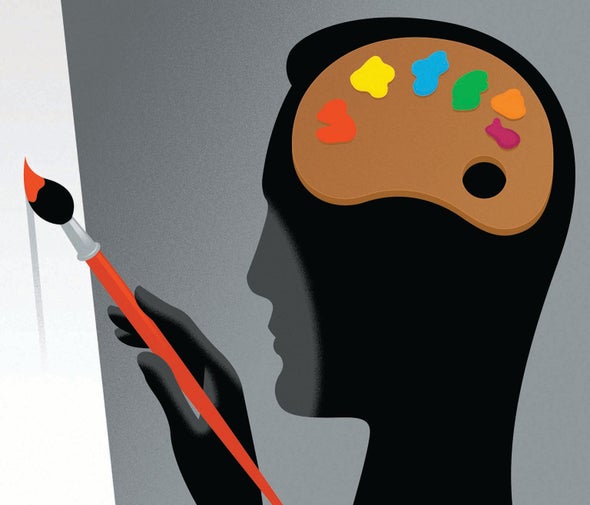Brain Degeneration and Artistic Creativity
"He could not even utter a single word.""[The study of artistic creativity as a signal of neurodegeneration remains unclear] whether overlapping brain mechanisms are responsible for generating an inspiring art piece or inventing a transformative technology."Adit Friedberg, neurologist"In neurology, we're so good at describing deficits.""For me, and I think for most people, it was a paradox. It was not something we were trained to think about.""I started to see people coming into my office who had carved ducks out of wood or who had welded beautiful insectlike creatures, or who had started painting."Bruce Miller, neurologist, director of UCSF Memory and Aging Center
Dr. Friedberg was confronted with a puzzle, that a man who had lost the ability to understand or to produce words, diagnosed with primary progressive aphasia (a form of frontotemporal dementia -- FTD), had suddenly developed a sense of visual creativity. The wife of one such patient of hers, presented her with a stack of her husband's creative work, asking, "What is he trying to tell me?"
 |
| Credit: Thomas Fuchs |
As their brains degenerate, there are some people who may develop increased visual creativity. Until a recent study led by Dr. Friedberg and associates, the underlying mechanism that led to this development was a mystery. Their study uncovered the potential brain structures involved, and the connections between them.
They concluded that sudden development of new strengths like artistic creativity could in fact be a signal of neurodegeneration -- an understanding that could lead to earlier monitoring and perhaps improved treatment. Her experience with that patient led Dr. Friedberg -- then completing residency at Tel Aviv Sourasky Medical Center -- to begin looking into scientific literature hoping to find evidence of links between neurodegeneration and artistic creativity.
Which was when she came across the case of Anne Adams in a 2008 study conducted by neurologists Bill Seeley and Bruce Miller, along with their colleagues at the University of California at San Francisco. The case revolved around Dr. Adams, a scientist who left academia in her 40s, to care for her son after a serious car accident. She began painting and never returned to the laboratory, becoming obsessed with art while signs of FTD; primary progressive aphasia; emerged.
FTD represents a group of neurodegenerative disorders in the frontal and temporal lobes of the brain, caused by the death of neurons in regions that control social behaviour and language, respectively. Dr. Friedberg was struck by the "hidden potential that can be evoked in the setting of disease". At the time a research fellow at the UCSF Memory and Aging Center, Dr. Friedberg led the study with Drs. Miller, Seeley and other colleagues.
The first case report of visual artistic creativity in someone with FTD was published by Dr. Miller in 1996, of a patient who had not been an artist, but suddenly "became obsessed with painting". Dr. Miller began encountering more FTD patients with visual artistic creativity. Hypotheses to explain how enhanced creativity could arise in patients with deteriorating brains were outlined for decades in case studies.
 |
As regions of the brain break down, the leading theory believed, regions further behind in the brain including those involved in vision increase compensatory activity. Little data was available and the researchers realized "a group study was needed" to help identify patterns between and unique to patients.
Dr Friedberg initiated the first FTD group study by evaluating hundreds of patient records collected between the years 2002 and 2019. Of that total she identified 17 FTD patients with visual artistic creativity, matching them to both healthy control subjects and FTD patients failing to show creativity, allowing the research team to investigate which brain changes related to FTD and which unique to patients with FTD and visual artistic creativity.
With the use of patient structural magnetic resonance imaging (MRI) data showing brain tissue structure and size unique to patients with FTD, they were able to perform atrophy network mapping, a technique comparing a patient's brain to a non-diseased human brain to determine what the patient's damaged region is connected to, along with how those connected regions could increase or decrease their activity. Another milestone in understanding the complex and variable issues of brain activity and degeneration.
 |
| An example of Anne Adams’ artwork after she was diagnosed with FTD. Visual representation of Maurice Ravel’s Boléro Courtesy Anne Adams/UCSF Memory and Aging Center |
Labels: Creativity as a Marker for Dementia, Creativity Onset, Dementia, Deteriorating Brains

0 Comments:
Post a Comment
<< Home